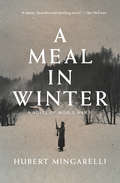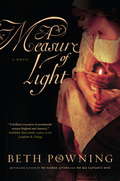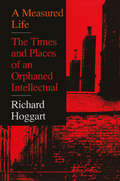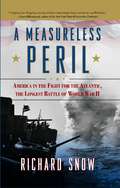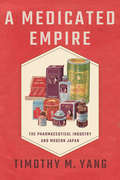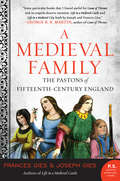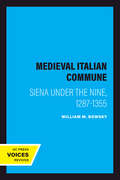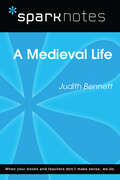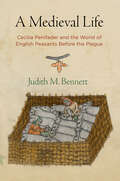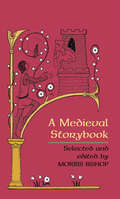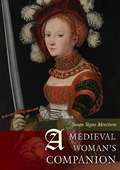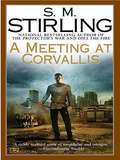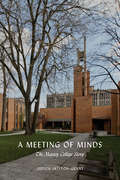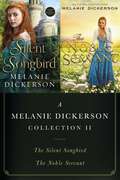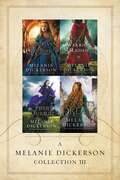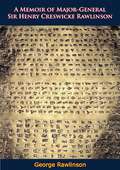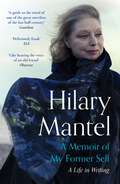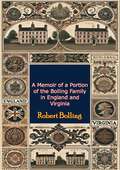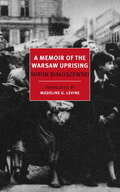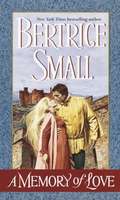- Table View
- List View
A Meal in Winter: A Novel of World War II
by Hubert MingarelliThis tale of the Holocaust &“will make many think of the stories of Ernest Hemingway . . . a reminder of the power a short, perfect work of fiction can wield&” (The Wall Street Journal). This timeless short novel begins one morning in the dead of winter, during the darkest years of World War II, with three German soldiers heading out into the frozen Polish countryside. They have been charged by their commanders with tracking down and bringing back for execution &“one of them&”—a Jew. Having flushed out a young man hiding in the woods, they decide to rest in an abandoned house before continuing their journey back to the camp. As they prepare food, they are joined by a passing Pole whose virulent anti-Semitism adds tension to an already charged atmosphere. Before long, the group&’s sympathies begin to splinter when each man is forced to confront his own conscience as the moral implications of their murderous mission become clear. Described by Ian McEwan as &“sparse, beautiful and shocking,&” A Meal in Winter is a &“stark and profound&” work by a Booker Prize–nominated author (The New York Times). &“Sustains tension until the very last page.&” —Kirkus Reviews, starred review
A Measure of Intelligence: One Mother's Reckoning with the IQ Test
by Pepper StetlerIn a quest to advocate for her daughter, Pepper Stetler uncovers the dark history of the IQ test, leading her to question what exactly we are measuring when we measure intelligence. When Pepper Stetler learned that her daughter, Louisa, who has Down Syndrome, would be required to take periodic IQ tests to secure support in school, she asked a simple question: Why? The hunt for an answer set Stetler on a winding, often dark investigation into how the IQ came to be the "irrefutable" standard for measuring intelligence. Blending a mother's love and dedication to her daughter with incisive historical and cultural analysis, A Measure of Intelligence investigates the origins of the IQ test and its influence on our oppressive culture of high stakes testing. As she unravels the history of the IQ--exposing its roots in eugenics, racism, xenophobia, and ableism--Stetler realizes that the desire to quantify intelligence is closely tied to the desire to segregate society. A Measure of Intelligence is at once a mother's determined quest, a demand for a fundamental reevaluation of how we understand an individual's perceived potential, and a recognition of what we miss when we judge one another by this warped scale.
A Measure of Light
by Beth PowningWith Beth Powning's trademark elegance and insight into the hearts and minds of unforgettable women, A Measure of Light brings to life an extraordinary historical figure. Mary Dyer is a seventeenth-century Puritan who flees persecution in England, only to find the colony of Massachusetts Bay as dangerous as the country she left behind. Though she is the wife of a successful merchant and mother to their children, she becomes stigmatized following a birth gone terribly wrong and is reviled as a friend to the infamous heretic Anne Hutchinson. Mary tries to accept New England's harsh realities, but is outraged by the cold-hearted Puritan magistrates, with their doctrinaire stranglehold on church and state, their subjugation of women, their wars against the natives in the surrounding territories and their vicious treatment of any who challenge their rule. Mary becomes one of America's first Quakers. As both outcast and privileged citizen, caught between the callings of faith and the ambitions of her husband, she comes to the realization that she must follow her convictions in order to bring an end to the brutal repression of the Quakers in Massachusetts, for whom death by hanging is the ultimate punishment. From Mary's relationship with Anne Hutchinson to her fiery exchanges with the colonial magistrates, A Measure of Light is both a sensitive work of imagination and meticulously true to the historical record. In this exceptional pairing of author and subject, Mary Dyer receives in the hands of Beth Powning-- herself a New England-born Quaker--the full-blooded recognition too long denied a woman of her moral stature and significance in shaping American history.From the Hardcover edition.
A Measured Life: The Times and Places of an Orphaned Intellectual
by Richard HoggartRichard Hoggart's book, The Uses of Literacy, established his reputation as a uniquely sensitive and observant chronicler of English working-class life. This pioneering work, first published in 1957, examines changes in the life and values of the English working class in response to mass media. It maps out a new methodology in cultural studies based around interdisciplinary and a concern with how textsin this case, mass publicationsare stitched into the patterns of lived experience. Mixing personal memoir with social history and cultural critique. The Uses of Literacy anticipates recent interest in modes of cultural analysts that refuse to hide the author behind the mask of objective social scientific technique. In its method and in its rich accumulation of the detail of working-class life, this volume remains useful and absorbing.
A Measureless Peril: America in the Fight for the Atlantic, the Longest Battle of World War II
by Richard SnowOf all the threats that faced his country in World War II, Winston Churchill said, just one really scared him--what he called the "measureless peril" of the German U-boat campaign. In that global conflagration, only one battle--the struggle for the Atlantic--lasted from the very first hours of the conflict to its final day. Hitler knew that victory depended on controlling the sea-lanes where American food and fuel and weapons flowed to the Allies. At the start, U-boats patrolled a few miles off the eastern seaboard, savagely attacking scores of defenseless passenger ships and merchant vessels while hastily converted American cabin cruisers and fishing boats vainly tried to stop them. Before long, though, the United States was ramping up what would be the greatest production of naval vessels the world had ever known. Then the battle became a thrilling cat-and-mouse game between the quickly built U.S. warships and the ever-more cunning and lethal U-boats. The historian Richard Snow captures all the drama of the merciless contest at every level, from the doomed sailors on an American freighter defying a German cruiser, to the amazing Allied attempts to break the German naval codes, to Winston Churchill pressing Franklin Roosevelt to join the war months before Pearl Harbor (and FDR's shrewd attempts to fight the battle alongside Britain while still appearing to keep out of it). Inspired by the collection of letters that his father sent his mother from the destroyer escort he served aboard, Snow brings to life the longest continuous battle in modern times. With its vibrant prose and fast-paced action, A Measureless Peril is an immensely satisfying account that belongs on the small shelf of the finest histories ever written about World War II.
A Medical History of Skin: Scratching the Surface (Studies for the Society for the Social History of Medicine #10)
by Kevin Patrick SienaDiseases affecting the skin have tended to provoke a response of particular horror in society. This collection of essays uses case studies to chart the medical history of skin from the eighteenth to the twentieth century.
A Medicated Empire: The Pharmaceutical Industry and Modern Japan (Studies of the Weatherhead East Asian Institute, Columbia University)
by Timothy M. YangIn A Medicated Empire, Timothy M. Yang explores the history of Japan's pharmaceutical industry in the early twentieth century through a close account of Hoshi Pharmaceuticals, one of East Asia's most influential drug companies from the late 1910s through the early 1950s. Focusing on Hoshi's connections to Japan's emerging nation-state and empire, and on the ways in which it embraced an ideology of modern medicine as a humanitarian endeavor for greater social good, Yang shows how the industry promoted a hygienic, middle-class culture that was part of Japan's national development and imperial expansion. Yang makes clear that the company's fortunes had less to do with scientific breakthroughs and medical innovations than with Japan's web of social, political, and economic relations. He lays bare Hoshi's business strategies and its connections with politicians and bureaucrats, and he describes how public health authorities dismissed many of its products as placebos at best and poisons at worst. Hoshi, like other pharmaceutical companies of the time, depended on resources and markets opened up, often violently, through colonization. Combining global histories of business, medicine, and imperialism, A Medicated Empire shows how the development of the pharmaceutical industry simultaneously supported and subverted regimes of public health at home and abroad.
A Medida do Homem
by Marco Malvaldi500 anos depois da morte de Leonardo Da Vinci, este romance traz de volta a maior figura do Renascimento Um caderno secreto. Uma morte por explicar. Um génio que, depois de cinco séculos, joga com a nossa inteligência e enche-nos de admiração. Outubro de 1493. Florença continua de luto pela morte de Lorenzo, o Magnífico. Os navios de Colombo só recentemente chegaram ao Novo Mundo. Enquanto isso, Milão experimenta um renascimento sob a liderança de Ludovico, o Mouro. Aqueles que vagueiam pelos pátios do Castelo de Milão ou ao longo dos canais Navigli encontram, frequentemente, um estranho homem, vestido com uma longa túnica rosa. Tem uma expressão calma, como alguém que está perdido nos seus próprios pensamentos. O homem, cujo nome é LEONARDO DA VINCI, vive por cima da sua oficina, com a mãe e um rapaz travesso que adora; não come carne, escreve da direita para a esquerda e luta para que os seus empregadores lhe paguem um salário. A sua fama estende-se para além dos Alpes, até à corte francesa de Carlos VIII, cujos enviados receberam uma missão secreta que diz respeito ao próprio Leonardo. Há quem diga que o inventor italiano mantém os seus desenhos mais ousados - incluindo talvez o projeto de um cavaleiro mecânico invencível - num caderno que traz escondido sob as vestes, perto do coração. Quando um homem é encontrado morto no pátio do castelo, o Mouro pede ajuda a Da Vinci. Embora o cadáver não mostre sinais de violência, a morte é altamente suspeita: rumores de uma praga ou explicações supersticiosas precisam ser refutados rapidamente. Leonardo não está em posição de recusar o pedido do seu mestre para investigar.
A Medieval Family: The Pastons of Fifteenth-Century England (Medieval Life #2)
by Frances Gies Joseph GiesThe Pastons family of Norfolk, England, has long been known to medieval scholars for its large collection of personal correspondence, which has survived five centuries. Revealing a wealth of information about manners, morals, lifestyle, and attitudes of the late Middle Ages, the letters also tell the story of three generations of the fifteenth-century Paston family that treads like a historical novel full of memorable characters: Margaret Paston, the indomitable wife and mother who fought the family's battles; her husband, John Paston I, tough, hardheaded, and thrice confined to Fleet Prison but never yielding to his enemies; daughter Margery, who scandalized family and friends by falling in love with the Paston bailiff, Richard Calle; lighthearted, chivalric Sir John; and cheerful, sensible John III, who against all odds succeeded in marrying for love. A Medieval Family traces the Pastons history from 1420, through the stormy Wars of the Roses, to the early 1500s. The family's story, extracted from their letters and papers and told largely in their own words, shows a side of history rarely revealed: the lives and fortunes not of kings and queens but of ordinary middle-class people with problems, tragedies, and moments of happiness.
A Medieval Feast
by Aliki<P>Describes the preparation and celebration of a medieval feast held at an English manor house entertaining royal guests. <P>[This text is listed as an example that meets Common Core Standards in English language arts in grades 2-3 at http://www.corestandards.org.]
A Medieval Italian Commune: Siena Under the Nine, 1287-1355
by William M. BowskyThis title is part of UC Press's Voices Revived program, which commemorates University of California Press’s mission to seek out and cultivate the brightest minds and give them voice, reach, and impact. Drawing on a backlist dating to 1893, Voices Revived makes high-quality, peer-reviewed scholarship accessible once again using print-on-demand technology. This title was originally published in 1981.This title is part of UC Press's Voices Revived program, which commemorates University of California Press’s mission to seek out and cultivate the brightest minds and give them voice, reach, and impact. Drawing on a backlist dating to 1893, Voices Revived</DIV
A Medieval Life (SparkNotes Literature Guide Series)
by SparkNotesA Medieval Life (SparkNotes Literature Guide) by Judith M. Bennett Making the reading experience fun! Created by Harvard students for students everywhere, SparkNotes is a new breed of study guide: smarter, better, faster. Geared to what today's students need to know, SparkNotes provides: *Chapter-by-chapter analysis *Explanations of key themes, motifs, and symbols *A review quiz and essay topicsLively and accessible, these guides are perfect for late-night studying and writing papers
A Medieval Life: Cecilia Penifader and the World of English Peasants Before the Plague (The Middle Ages Series)
by Judith M. BennettA Medieval Life offers a biography of one woman, a portrait of her world, and an introduction to historical method. A Medieval Life offers a biography of one woman, a portrait of her world, and an introduction to historical method. Written in a clear and accessible style, it reworks a well-loved book to provide an entirely new resource for students, teachers, and general readers.Like Cecilia Penifader, most people in the Middle Ages were peasants, humble people living socially below the knights, bishops, and kings who figure so large in history books. Judith M. Bennett shows that peasants, too, made history. She explores how peasant lives were closely entangled with the lives and interests of those more privileged, looking at manors as well as villages; parishes, faith, and ritual practices; royal taxes and justice; economy and trade; famine and disease. By moving out from Cecilia's perspective, the book explores the ties and tensions that bound all medieval people—poor as well as rich—into a medieval society.The book also provides a primer on the fact-finding and interpretative debates that are at the heart of the historian's craft. Each chapter includes a new section on how medievalists today are studying such topics as puberty, morals, courtship, and climate change. The illustrations, taken from the famous Luttrell Psalter, provide a coherent, rich, and interpretatively complex visual program. And the final chapter explores some of the different ways in which historians, for better and for worse, have understood medieval society.
A Medieval Storybook
by Morris BishopFrom the rich store of medieval tales, Morris Bishop brings together a delightful collection of thirty-five stories. Some are romantic, some religious, some realistic, some even scurrilous. There are merry tales and moral tales, sagas, allegories, and fables. They vary widely in theme and their characters represent every class of medieval society. The tales in A Medieval Storybook vividly illustrate medieval life and thought. Above all they excel as stories, and demonstrate the high level attained by narrative art in the Middle Ages and the great gift the medieval writers had for creating lively and memorable characters. Some of the stories in the book were translated by Bishop; others were translated in the nineteenth and early twentieth centuries. Line drawings by Alison Mason Kingsbury add considerably to the charm of this collection.
A Medieval Woman's Companion: Women's Lives in the European Middle Ages
by Susan Signe MorrisonExperience is Right Enough for Me Fearless Females Women of Wisdom Non-Conformists My Most Honored Ladies Pioneers
A Meeting at Corvallis (Emberverse I, Book #3)
by S. M. StirlingThe fabulous Phryne - she of the Lulu bob, Cupid's Bow lips and a pearl-handled pistol in her garter - is back! The 1920s most elegant and irrepressible sleuth returns for her seventeenth adventure. Melbourne, 1929. The year starts off for glamorous private investigator Phryne Fisher with a rather trying heat wave and more mysteries than you could prod a parasol at. Simultaneously investigating the apparent suicide death of a man on St Kilda beach and trying to find a lost, illegitimate child who could be heir to a wealthy old woman's fortune, Phryne needs all her wits about her, particularly when she has to tangle with a group of thoroughly unpleasant Bright Young Things. Phryne Fisher is a force of nature, and takes in her elegant stride what might make others quail, including terrifying séances, ghosts, Kif smokers, the threat of human sacrifices, dubious spirit guides and maps to buried pirate treasure. . .
A Meeting of Minds
by Judith Skelton GrantOpened in 1963, Massey College is a residential college for graduate students at the University of Toronto. The college was the brainchild of Vincent Massey, Canada's first native-born Governor General, who wanted to create an intellectually stimulating milieu like the one he associated with the long-established colleges of Oxford and Cambridge. Massey College's first master was the legendary Canadian novelist, playwright, and editor, Robertson Davies. Davies and his successors - Patterson Hume, Ann Saddlemyer, and John Fraser - fostered a dynamic community of students, scholars, and public intellectuals that thrives today under the mastership of Hugh Segal.Written by Judith Skelton Grant, A Meeting of Minds is the definitive account of the college's first fifty years, its many traditions, and the hundreds of fellows who have passed through its halls. Full of wonderful anecdotes about the college's notable fellows and alumni, this history of Massey College takes the reader into the heart of one of Canada's most important intellectual institutions.
A Melanie Dickerson Collection II: The Silent Songbird and The Noble Servant
by Melanie DickersonTwo novels from New York Times bestselling author Melanie Dickerson are now available in a low-priced, one-volume e-collection!The Silent SongbirdEvangeline is gifted with a heavenly voice, but she is trapped in a sinister betrothal until she embarks on a daring escape and meets brave Westley le Wyse. Can he help her discover the freedom to sing again? More than Evangeline’s future is at stake as she finds herself entangled in a web of intrigue that threatens England’s monarchy. Should she give herself up to protect the only person who cares about her? If she does, who will save the king from a plot to steal his throne?The Noble ServantMagdalen lost everything to the scheme of an evil servant. When a handsome shepherd befriends her, Magdalen and the shepherd uncover a sinister plot. She might just gain what she’s always wanted . . .if she makes it in time. New York Times bestselling author Melanie Dickerson beautifully re-imagines The Goose Girl by the Brothers Grimm into a medieval tale of adventure, loss, and love.
A Melanie Dickerson Collection III: The Orphan’s Wish, The Warrior Maiden, The Piper’s Pursuit, The Peasant’s Dream
by Melanie DickersonThe final four Hagenheim novels from New York Times bestselling author Melanie Dickerson, now available in one low-priced e-collection.The Orphan&’s WishA reimagining of the beloved folktale, Aladdin, set in medieval Germany.Orphaned and alone, Aladdin travels from the streets of his Arab homeland to a strange, faraway place. Growing up in an orphanage, he meets young Lady Kirstyn, whose father is the powerful Duke of Hagenheim. Despite the difference in their stations, Aladdin quickly becomes Kirstyn&’s favorite companion, and their childhood friendship grows into a bond that time and opposition cannot break.An enchanting new version of the well-known tale, The Orphan&’s Wish tells a story of courage and loyalty, friendship and love, and reminds us what &“family&” really means.The Warrior MaidenA reimagining of the classic Mulan tale in medieval Europe, where both love and war challenge even the strongest of hearts.When Mulan takes her father&’s place in battle against the besieging Teutonic Knights, she realizes she has been preparing for this journey her whole life—and that her life, and her mother&’s, depends on her success. As the adopted daughter of poor parents, Mulan has little power in the world. If she can&’t prove herself on the battlefield, she could face death—or, perhaps worse, marriage to the village butcher.The Piper&’s PursuitA fairy-tale journey of intrigue and romance that reimagines the classic Pied Piper story.A plague of rats. A giant beast outside the village walls. A host of missing children. And one young woman determined to save her people.In 1424 Hamlin, Katerina faces threats from all sides. An outbreak of rats has overtaken the village, a mysterious beast is on a killing rampage of the village&’s children, and Katerina&’s evil stepfather is a dark presence inside the walls of her own home. Katerina is determined to hunt and kill the Beast of Hamlin herself before more lives are lost.The Peasant&’s DreamIn this reverse reimagining of the Cinderella story, secrets and dangerous enemies threaten a fairy-tale romance.Adela, daughter of the Duke of Hagenheim, is rarely allowed outside the castle walls. But one day, longing for freedom, she sneaks away to the market disguised as a peasant. There, she meets a handsome young woodcarver named Frederick.Four full-length, clean fairy-tale reimaginingsThe Hagenheim stories can be read in any order: The Healer&’s Apprentice, The Merchant&’s Daughter, The Fairest Beauty, The Captive Maiden, The Princess Spy, The Golden Braid, The Silent Songbird, The Orphan&’s Wish, The Warrior Maiden, The Piper&’s Pursuit, The Peasant&’s DreamIncludes discussion questions for book clubs
A Melanie Dickerson Collection: The Huntress of Thornbeck Forest, The Beautiful Pretender, The Golden Braid
by Melanie DickersonThree complete novels from New York Times bestselling author Melanie Dickerson now available in a low-price, one-volume e-collection! The Huntress of Thornbeck Forest A beautiful maiden who poaches to feed the poor. A handsome forester on a mission to catch her. Danger and love are about to unite in Thornbeck Forest. The Beautiful Pretender After inheriting his title from his brother, the margrave has two weeks to find a noble bride. What will happen when he learns he has fallen for a lovely servant girl in disguise? The Golden Braid Rapunzel can throw a knife better than any man. She paints beautiful flowering vines on the walls of her plaster houses. She sings so sweetly she can coax even a beast to sleep. But there are two things she is afraid her mother might never allow her to do: learn to read and marry.
A Memoir of Major-General Sir Henry Creswicke Rawlinson
by George RawlinsonSir Henry Creswicke Rawlinson, (born April 11, 1810, Chadlington, Oxfordshire, Eng.—died March 5, 1895, London), British army officer and Orientalist who deciphered the Old Persian portion of the trilingual cuneiform inscription of Darius I the Great at Bīsitūn, Iran. His success provided the key to the deciphering, by himself and others, of Mesopotamian cuneiform script, a feat that greatly expanded knowledge of the ancient Middle East. In 1827 Rawlinson went to India as a British East India Company cadet, and in 1833 he and other British officers were sent to Iran to reorganize the shah’s army. There he became keenly interested in Persian antiquities, and deciphering the cuneiform inscriptions at Bīsitūn became his goal. After two years of work, Rawlinson published his translations of the first two paragraphs of the inscription (1837). Required to leave the country because of friction between Iran and Britain, Rawlinson was nevertheless able to return in 1844 to obtain impressions of the Babylonian script. As a result, his Persian Cuneiform Inscription at Behistun appeared (1846–51); it contained a complete translation, analysis of the grammar, and notes—altogether an achievement yielding valuable information on the history of ancient Persia and its rulers. With other scholars he succeeded in deciphering the Mesopotamian cuneiform script by 1857. The way to understanding ancient Babylonia and Assyria and much of biblical history now lay open. Meanwhile Rawlinson had become British consul at Baghdad (1843) and had given his collection of antiquities to the British Museum (1849–51). He became consul general at Baghdad (1851) and succeeded the archaeologist Henry Austen Layard in the work of obtaining ancient sculptures for the museum....His other writings include A Commentary on the Cuneiform Inscriptions of Babylonia and Assyria (1850) and Outline of the History of Assyria (1852).
A Memoir of My Former Self: A Life in Writing
by Hilary Mantel'I breathed in stories, as soon as I breathed in air. Sometimes I think I wasn't born, but I just came out of an ink blot.''Mantel's idiosyncratic and magisterial voice comes through on every page, carrying readers across an astonishing array of subject matter with ease. This is a treasure' Publishers Weekly As well as her celebrated career as a novelist, Hilary Mantel long contributed to newspapers and journals, unspooling stories from her own life and illuminating the world as she found it. This strand of her writing was an integral part of how she thought of herself. 'Ink is a generative fluid,' she explains. 'If you don't mean your words to breed consequences, don't write at all.' A Memoir of My Former Self collects the finest of this writing over four decades. Mantel's subjects are wide-ranging. She discusses nationalism and her own sense of belonging; our dream life flopping into our conscious life; the mythic legacy of Princess Diana; the many themes that feed into her novels - revolutionary France, psychics, Tudor England - and other novelists, from Jane Austen to V. S. Naipaul. She writes about her father and the man who replaced him; she writes fiercely and heartbreakingly about the battles with her health she endured as a young woman, and the stifling years she found herself living in Saudi Arabia. Here, too, is a selection of her film reviews - from When Harry Met Sally to RoboCop - and, published for the first time, her stunning Reith Lectures, which explore the process of art bringing history and the dead back to life.From her unique childhood to her all-consuming fascination with Thomas Cromwell that grew into the Wolf Hall Trilogy, A Memoir of My Former Self reveals the shape of Hilary Mantel's life in her own dazzling words, 'messages from people I used to be.' Compelling, often very funny, always luminous, it is essential reading from one of our greatest writers.'A smart, deft, meticulous, thoughtful writer, with such a grasp of the dark and spidery corners of human nature' Margaret Atwood
A Memoir of a Portion of the Bolling Family in England and Virginia
by Robert BollingA Memoir of a Portion of the Bolling Family in England and Virginia by Robert Bolling offers a fascinating glimpse into the genealogical history and legacy of the Bolling family, a prominent lineage that spans both sides of the Atlantic. Written in the 19th century, this memoir serves as both a family record and a historical reflection, tracing the roots of the Bolling family from its English origins to its influential presence in colonial Virginia.Bolling meticulously documents the lives, marriages, and achievements of various family members, beginning with the family’s early history in England. The narrative then shifts to Virginia, where the Bolling family became deeply intertwined with the social, political, and economic fabric of the colony. Notably, the book discusses the family’s connection to Pocahontas through the marriage of Robert Bolling (1646-1709) to Jane Rolfe, the granddaughter of Pocahontas and John Rolfe, establishing the Bollings as part of an American historical legacy.In addition to genealogical details, Bolling offers insights into the challenges and triumphs of the family in Virginia, set against the backdrop of colonial expansion, the American Revolution, and the early years of the Republic. Personal anecdotes and reflections enrich the narrative, creating a vivid portrait of life in both England and the New World during key periods of history.This memoir is not just a genealogical resource but a valuable historical document, shedding light on family dynamics, colonial society, and transatlantic connections. For readers interested in genealogy, early American history, or Virginia’s colonial heritage, A Memoir of a Portion of the Bolling Family in England and Virginia offers a richly detailed and engaging account of one family’s enduring legacy across generations.
A Memoir of the Warsaw Uprising
by Madeline G. Levine Miron BialoszewskiOn August 1, 1944, Miron Białoszewski, later to gain renown as one of Poland's most innovative poets, went out to run an errand for his mother and ran into history. With Soviet forces on the outskirts of Warsaw, the Polish capital revolted against five years of Nazi occupation, an uprising that began in a spirit of heroic optimism. Sixty-three days later it came to a tragic end. The Nazis suppressed the insurgents ruthlessly, reducing Warsaw to rubble while slaughtering some 200,000 people, mostly through mass executions. The Red Army simply looked on.Białoszewski's blow-by-blow account of the uprising brings it alive in all its desperate urgency. Here we are in the shoes of a young man slipping back and forth under German fire, dodging sniper bullets, collapsing with exhaustion, rescuing the wounded, burying the dead. An indispensable and unforgettable act of witness, A Memoir of the Warsaw Uprising is also a major work of literature. Białoszewski writes in short, stabbing, splintered, breathless sentences attuned to "the glaring identity of 'now.'" His pages are full of a white-knuckled poetry that resists the very destruction it records.Madeline G. Levine has extensively revised her 1977 translation, and passages that were unpublishable in Communist Poland have been restored.the force of the inhuman Nazi machine could not--and cannot--obliterate.
A Memory of Love: A Novel
by Bertrice SmallNew York Times bestselling author Bertrice Small writes searing novels as unforgettable as the indomitable heroines who live and love within them. Now comes a tale of stunning passion, reckless danger, and the fiery will of a remarkable woman who can wield a sword as powerfully as any man--and who dares to fight for her most uninhibited desires. . . . Spirited, fierce-willed Rhonwyn is the bastard child of the Prince of Wales, raised more boy than girl, able to ride and fight with the best. Against her wishes, she is married off to an English lord, Edward de Beaumont, who is stunned to discover his lovely gilt-haired bride is a spitting wildcat with a mind of her own. Slowly, he wins her trust and her heart, and she accompanies him on the Crusades to North Africa. But when Edward falls ill, Rhonwyn boldly leads his troops, only to become the captive of the sensual Emir of Cinnebar, a man who will teach her the ways of erotic love--passions that will be put to the test when she returns to England to battle once more . . . this time for the man who rules her heart.
